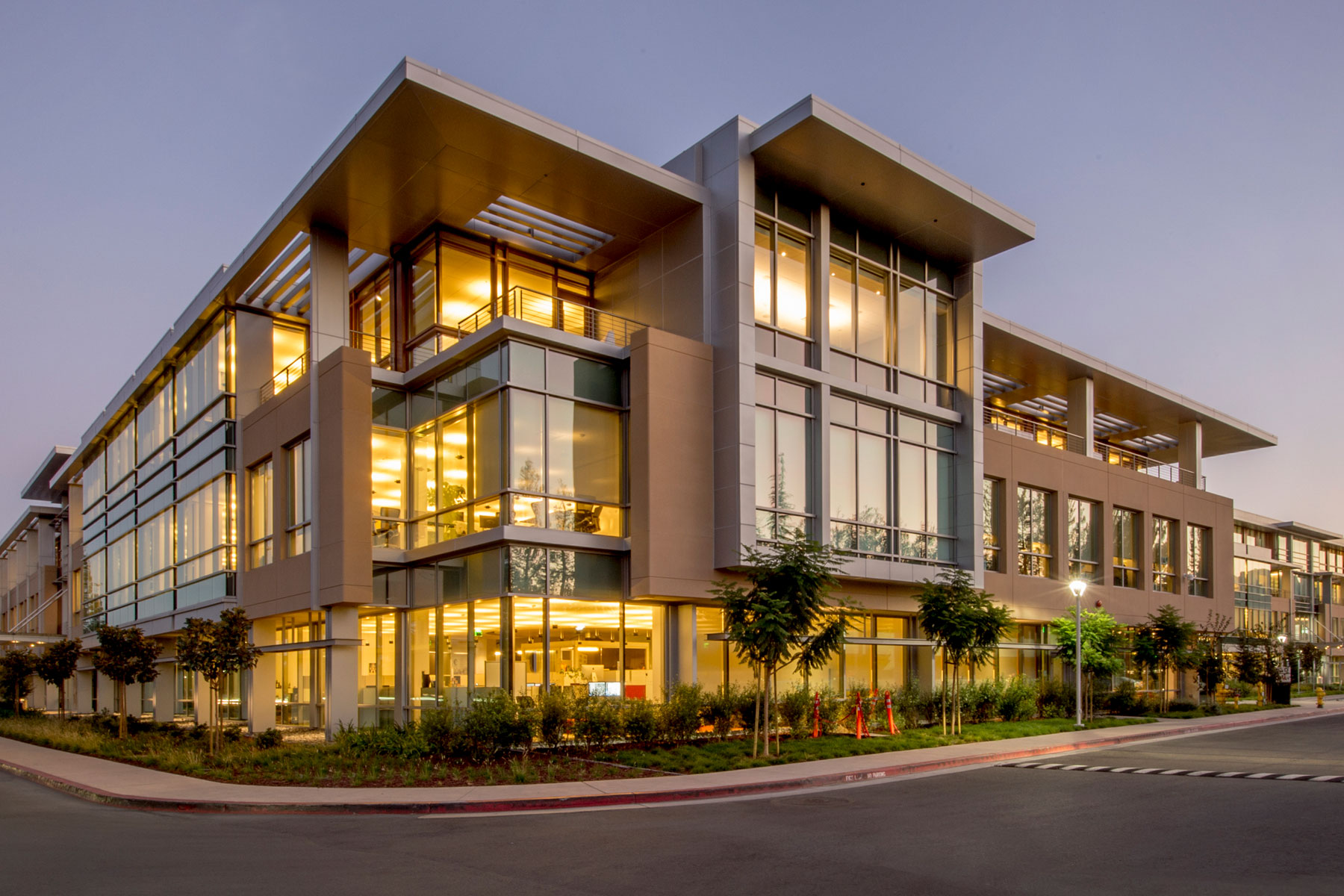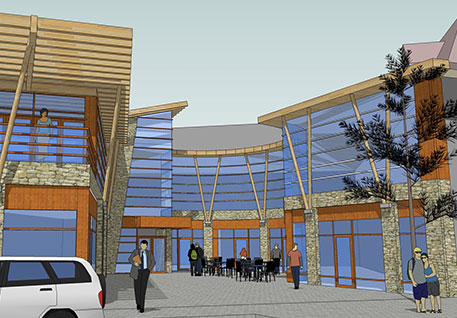Top Challenges commercial architects Face in Today’s Complex Urban Landscape (and How They Solve Them)
Revealing the Comprehensive Providers Given by Commercial Architects for Modern Dope
Commercial Architects serve a critical function in contemporary advancement projects. They mix design aesthetics with performance while sticking to regulative demands. Their know-how extends past simple building and construction, incorporating sustainable methods and innovative modern technologies. As they browse complicated zoning legislations, Architects work together with numerous stakeholders to bring visions to life. This complex strategy raises inquiries about the evolving role of Architects fit modern-day areas and the influence of their service future advancements.
Understanding the Duty of Commercial Architects in Modern Developments
In contemporary city landscapes, Commercial Architects play a critical function fit practical and aesthetic rooms that fulfill varied company needs. Their proficiency extends beyond plain style; they navigate complex zoning regulations, building codes, and ecological laws. By collaborating with customers, they determine certain demands, guaranteeing that each project aligns with the customer's vision while additionally taking into consideration practical aspects such as sustainability and cost-effectiveness. Commercial Architects are skilled at integrating ingenious innovations and materials into their styles, enhancing both the capability and energy effectiveness of buildings. They conduct thorough website analyses to examine the prospective difficulties and opportunities provided by a location. Additionally, effective communication with contractors and other stakeholders is vital, making certain that the job advances efficiently from conception to completion. Eventually, Commercial Architects contribute in creating areas that not only meet functional objectives but likewise add to the overall character and vibrancy of city settings.
Idea Style: Transforming Concepts Into Truth
Concept style acts as an important stage in Commercial design, where cutting-edge design services arise from innovative brainstorming. This procedure counts on collaborative ideation, uniting varied viewpoints to fine-tune and enhance first principles. As ideas take form, they change from abstract ideas right into tangible architectural facts.
Ingenious Style Solutions
Changing ideas right into truth is the trademark of ingenious style services in Commercial style. These solutions mix imagination with capability, addressing the unique requirements of contemporary advancements. By leveraging sophisticated modern technologies and sustainable techniques, Architects craft rooms that are not just visually attractive but also reliable and versatile. Emphasis on user experience drives the style procedure, guaranteeing that atmospheres foster productivity and collaboration. Each task advantages from a customized approach, where principles are carefully established to reflect the customer's vision while taking into consideration future fads. Cutting-edge design options likewise prioritize versatility, permitting alterations gradually as service requirements advance. Ultimately, these strategies boost the overall worth of Commercial areas, making them pivotal in today's affordable landscape.

Collective Ideation Refine
Cooperation works as the backbone of the ideation process in Commercial design, cultivating creativity and technology amongst varied stakeholders. Architects, customers, designers, and neighborhood members engage in dynamic discussions, ensuring that all perspectives are taken into consideration. This inclusive strategy enables the exploration of different style ideas, urging distinct solutions that align with the task's vision. Through workshops and brainstorming sessions, ideas advance and refine, changing preliminary ideas into substantial designs. Technology additionally plays a crucial function, with devices such as Structure Information Modeling (BIM) promoting real-time cooperation and modifications. Ultimately, this collective ideation procedure not only boosts the style result but additionally grows a sense of ownership and financial investment among all celebrations involved, bring about successful Commercial developments.
Zoning Analysis: Navigating Rules and Compliance
As programmers start on brand-new jobs, recognizing zoning laws is vital to making sure compliance and staying clear of expensive hold-ups. Zoning analysis plays a vital function in this procedure, as it includes evaluating local zoning regulations that dictate land use, building height, density, and problems. Commercial Architects have the experience to navigate these complicated laws, helping clients recognize allowable uses and any kind of needed variations.
Sustainable Layout Practices: Structure for the Future
Lasting layout methods are progressively crucial in the domain of Commercial architecture, particularly as environmental problems remain to escalate. Architects prioritize environmentally friendly materials, energy-efficient systems, and design strategies that reduce waste and ecological impact. Incorporating renewable resource resources, such as solar panels and wind generators, allows structures to generate their very own power and decrease dependence on fossil fuels.Furthermore, lasting layout emphasizes the significance of interior ecological top quality. This includes making use of natural light, improving ventilation, and choosing safe materials to boost occupant health and efficiency. Environment-friendly roofs and living walls are additionally popular functions that contribute to biodiversity and urban cooling.Additionally, Commercial Architects commonly integrate water conservation methods, like rainwater harvesting and drought-resistant landscaping. Via these ingenious methods, they create areas that not just fulfill contemporary requirements but additionally promote a sustainable future, resolving the expanding need for liable development in the modern-day world.
Task Administration: Ensuring Timely and Efficient Implementation
Reliable task monitoring is necessary for guaranteeing that Commercial architecture projects are finished in a timely manner and within budget. This duty includes a variety of responsibilities, consisting of the coordination of numerous stakeholders, timelines, and resources. Commercial Click This Link Architects leverage their know-how to produce detailed job strategies that describe crucial landmarks and deliverables, permitting organized development tracking.Regular interaction among employee and customers is vital, fostering transparency and promoting prompt decision-making. Threat management approaches are also utilized to determine prospective challenges early, allowing positive remedies to be established. By utilizing innovative project monitoring devices, Architects can keep an eye on task efficiency in real-time, making adjustments as required to keep effectiveness.
Interior Decoration: Producing Functional and Visual Spaces
Interior decoration plays a vital duty in enhancing both functionality and aesthetics within Commercial areas. Efficient space preparation can maximize operations and improve individual experience, while aesthetic style principles contribute to a visually attractive atmosphere - commercial architects. Together, these elements create areas that are not only functional yet additionally inspiring
Area Planning Efficiency
While making the most of the energy of readily available area, Commercial Architects prioritize space planning effectiveness to create both useful and cosmetically pleasing settings. This technique entails mindful evaluation of the spatial layout to assure ideal use every square foot. Architects consider aspects such as operations, availability, and all-natural light to improve functionality. By tactically putting furnishings, tools, and workstations, they assist in activity and interaction among individuals, promoting efficiency. Furthermore, zoning different locations for particular features helps in taking care of sound and personal privacy, producing an unified environment. Through reliable area planning, Commercial Architects can change restrictions right into opportunities, making sure that each area fulfills the diverse requirements of its owners while sticking to governing requirements and industry standards.
Visual Layout Principles
Visual design principles play a necessary duty fit atmospheres that are not just useful however additionally visually attractive. These concepts assist Commercial Architects in creating areas that reverberate with users while boosting brand name identification. Crucial element include equilibrium, percentage, and consistency, which interact to create a natural appearance. Color pattern and products are thoroughly selected to evoke wanted feelings and sustain the total motif. Additionally, lights plays an essential duty, influencing state of mind and visibility while highlighting architectural features. By integrating these principles, Architects ensure that rooms are not just practical yet additionally inviting and motivating. Inevitably, effective visual style promotes a positive individual experience, motivating interaction and fulfillment in Commercial atmospheres.
Partnership With Stakeholders: Promoting Successful Partnerships
Effective collaborations in Commercial design joint on effective collaboration with stakeholders, guaranteeing that every voice is heard and valued. This collaborative strategy involves interesting different parties, consisting of clients, service providers, and area Find Out More members, throughout the style and development process. By cultivating open communication, Commercial Architects can resolve worries, gather understandings, and line up the task's vision with stakeholder expectations.The combination of varied viewpoints improves creativity and technology, bring about even more functional and cosmetically pleasing styles. Normal conferences, comments sessions, and workshops facilitate this discussion, permitting Architects to adjust their strategies in reaction to stakeholder input. In enhancement, developing trust fund through openness and liability strengthens these collaborations, causing a smoother task execution.Ultimately, the success of modern developments depends upon the Architects' ability to navigate and harmonize varying rate of interests, developing a collaborative atmosphere that advertises discover this info here shared objectives and mutual success.
Often Asked Inquiries
Just How Do Commercial Architects Manage Spending Plan Constraints During a Job?

What Kinds of Software Application Do Commercial Architects Commonly Make Use Of?
Commercial Architects commonly use software such as AutoCAD for preparing, Revit for Structure Info Modeling, SketchUp for 3D modeling, and project administration devices like Microsoft Project to improve partnership and improve process throughout the layout process.
Can Commercial Architects Help With Obtaining Funding for Projects?
Commercial Architects can help in obtaining financing for tasks by preparing thorough proposals, helping to express design visions, and giving financial forecasts that can improve the chance of protecting needed financing from investors or financial establishments.
Exactly How Do Architects Make Certain Safety During the Building Process?
Architects assure security during construction by carrying out rigorous design criteria, collaborating with designers, performing regular website evaluations, sticking to regional guidelines, and fostering communication among all stakeholders to minimize risks and promote a safe workplace.
What Ongoing Assistance Do Architects Offer After Task Conclusion?
After job completion, Architects offer recurring assistance via maintenance consultations, performance assessments, and layout modifications. They assure structures meet developing needs, address potential concerns, and preserve compliance with regulations, cultivating a long-term relationship with clients.